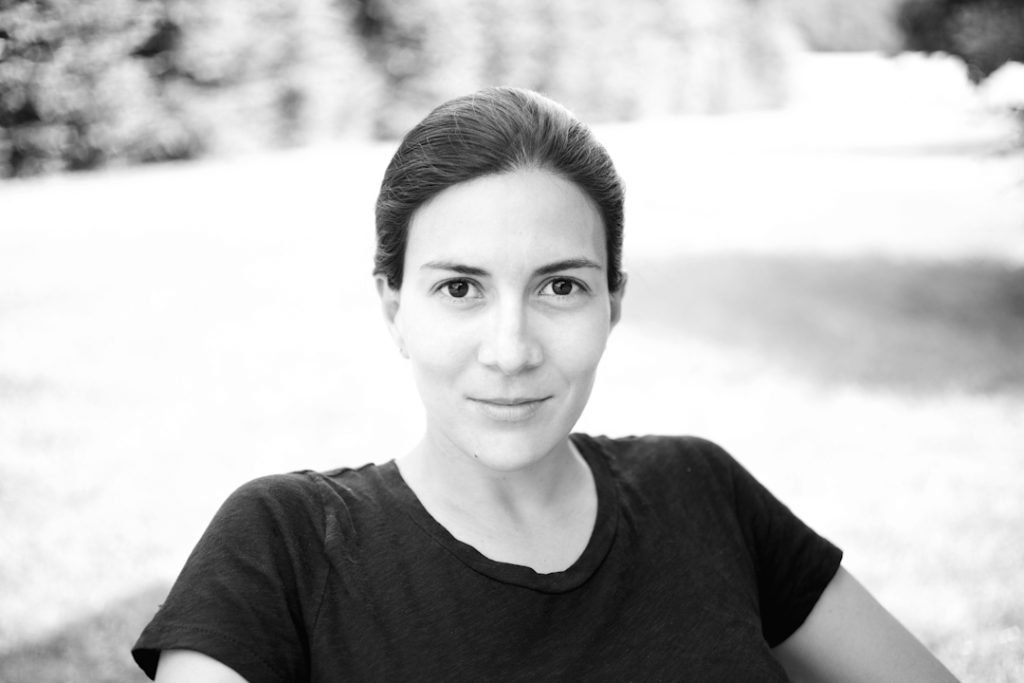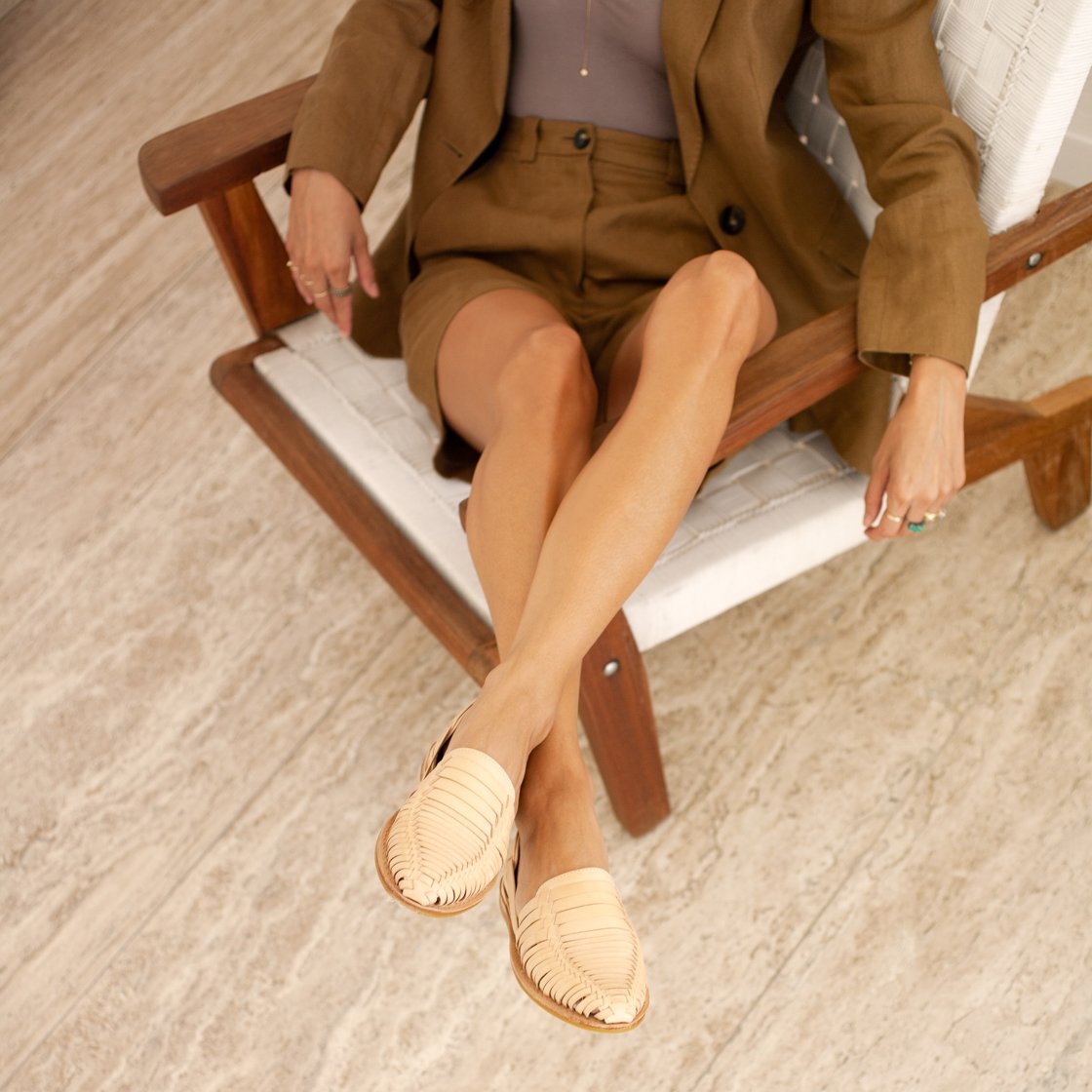It was my last summer in New York, where I had lived for six years. During that time I finished my Masters in Art History and worked as a photographer. It was a hot summer day, and I was hopping from one store to the next, looking for the perfect comfortable sandal. I was five months pregnant, and my feet were tired. I needed something comfortable to wear throughout the last stages of my pregnancy, but the more I looked, the more uninspired I felt. Nothing pleased both my eyes and my feet. The result: Due to the shortage of options, I ended up buying a predictable pair of sandals. A couple of weeks later I moved with my husband to California, and those cork footbed shoes accompanied me. From time to time, looking at my feet below my growing belly, I would think: Why am I still wearing these unflattering shoes? Although they were comfortable, if we were to judge by Marie Kondo’s “keep or toss” criterion, questioning the joy the item brings to your life, I would have to say they not only did not bring me joy, but they “misrepresented” me. Why do we, as mothers, have to sacrifice looks for functionality?
I tend to value the story behind how things are made. So, when I was doing online research on “the perfect sandal” and bumped into an ad that said “handmade huaraches,” I clicked. Being born and raised in Acapulco, Mexico, I have always loved Mexican huaraches and did not expect to find them far away from home. It was 2016 and Facebook Marketplace had just been released. I suspiciously contacted the person selling the shoes. It felt like the days when the Avon lady stopped by your house; I heard a car pull up in my driveway and a woman with her husband and baby came in with a box full of huaraches. Suddenly, an array of beautiful Mexican huaraches was displayed in my living room. I will later recall that day as the moment when my need for the perfect sandal and love for huaraches turned into an obsession. As an art historian, I started digging a little bit into the history of huaraches and huarache-making in Mexico, a tradition that goes back to pre-Columbian times and traditional vegetable leather tanning. Huaraches are Mexican sandals that are made by weaving leather straps by hand. The name “huarache” comes from the Purépechan word kwarachi, meaning “sandal” in English.


Although I loved the Mexican huaraches displayed in my living room, I soon realized that they were mass-produced. It was the neoliberal transmutation of an heirloom heritage—one that prioritized quantity above quality. Also, the use of cheap materials was visible: The upper leather had that plastic-look when leather is tanned with chrome, and the insole was made of synthetic materials. I later learned that no less than about 90 percent of the world’s leathers are chrome-tanned, due to the lower cost. Relatively few tanneries today have the capability to produce vegetable-tanned leather as the time and skill involved in its production make it an expensive material. When I started doing research about developing my own line of huaraches, the first search I did was for a sustainable vegetable-tanned leather provider. I found one in León, Mexico, which developed a 100 percent sustainable leather specifically for our huaraches—one that has a natural look and is irresistibly soft. Next was finding our manufacturer. After many trips to Mexico to find the right one that could accommodate a new huarache line tailored to our sustainable-spirited needs, we found our home-workshop in Sahuayo, Mexico, a town known for its centuries-long history of huarache-making. Lastly, although I admire traditional huaraches’ stripe-based designs, there was room for making a design twist and reducing the baroqueness of the lines to maximum simplicity. Since the beginning, Palapa Sandals has had two passions: design and sustainability.
I was naive in thinking it was going to be a simple journey to tailor huaraches with minimalistic stripe-based designs, but because of the engineering complexity, developing a new “simple” product meant bringing together shoe designers, shoe technicians, foot models, huarache technicians and female artisans. A collaboration of tradition and modernity. Technology and craftwomenship. It took us a year of research and trial and error to make our Handwoven Forever Collection, composed of three models. We narrowed the collection into three distinct styles that honor its Mexican heritage while becoming the new everyday staple for every woman’s closet.
Perhaps the biggest challenge I have faced is deciding to postpone our launch due to the pandemic. My initial plan was to launch during the spring of 2020, but the health and quarantine conditions made it impossible. Our workshop in Mexico had to close for a couple of months. I waited and waited; then, when we all realized the pandemic was not going anywhere, I had to take two steps back to breathe in and ultimately decided to postpone our launch for a year. I geared up. I learned to be more organized. With two kids doing homeschooling, I had to. The best decision was to invite two friends to join the Palapa team. These two talented, passionate Mexican women—Sandra Dávila and Sofía Prado—at my side made the Palapa project stronger, richer. It was because of the pandemic that Palapa became what the name means, as our brand takes its name from a Spanish word that refers to a shelter roof. The most common place to see a palapa is in Mexico’s tropics, providing shade. Yet inside a palapa you don’t only find refuge from the sun. A palapa is also a safe space. One that reminds you of slowing down to be happier.

Slow-pacing, slow-living. We believe that slowing down helps us be happier. And that involves slowing down the environmental impact as well: using better-quality products treated with eco-friendly processes that will make our sandals last longer and help the pursuit of global environmental sustainability. It involves timeless design to make wear-anywhere-anytime sandals that look more beautiful season after season.
Lorena Marron is the founder and CEO of Palapa Sandals.






